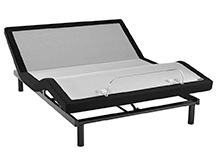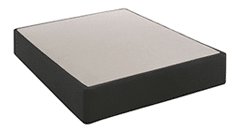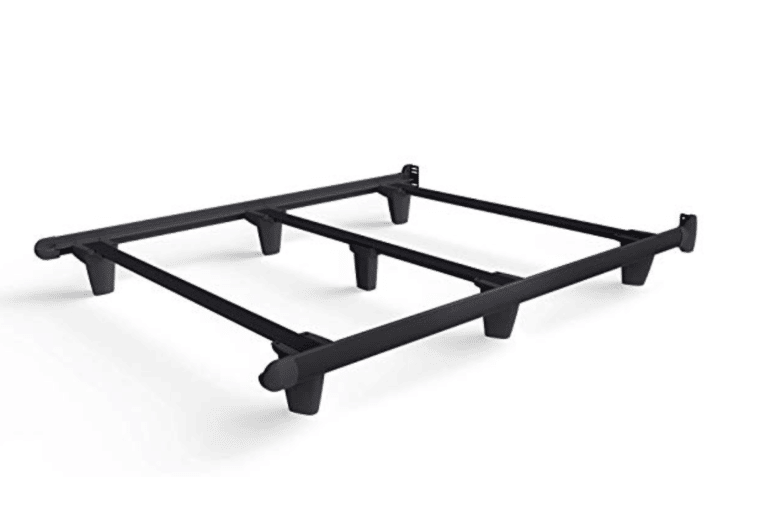
Sleep apnea is a sleep disorder characterized by loud snoring and interrupted breathing patterns that repeatedly start and stop, leaving a person feeling tired the next day, even if they feel they have slept through the night. It can be potentially serious, so you should see your doctor if you think this applies to you.
People with sleep apnea can generally continue to function in their day to day lives, albeit– they won’t be functioning at their very best due to subtle sleep deprivation that gradually adds up to significant sleep debt.
Over time, there are serious health hazards that arise when your sleep is interrupted regularly and this is potentially life-threatening. Fortunately, the signs and symptoms of sleep apnea are more obvious to notice–so don’t ignore them!
Symptoms your bed partner can notice and report to you:
Symptoms you can notice for yourself:
Not everyone that snores has sleep apnea, but the presence of additional symptoms ought to be a red flag to see your doctor.
There are three different types of sleep apnea and anyone, including children, can be affected by it. Depending on the type of sleep apnea a person may have, different risk factors implicate, lead to, or complicate the condition.
Obstructive Sleep Apnea– This is the most common type and is related to the malfunction of the muscles relaxing in the back of the throat. As you breathe in, these muscles go into a brief relaxed state, closing the airway and suspending your breathing. The brain then registers that it’s not getting oxygen and rouses you from sleep to facilitate resuming breathing–but not indefinitely through the night. This pattern repeats itself, meaning that your sleep is being disrupted intermittently from 5 to 30 times each hour, all night long. Being roused from sleep like this prevents you from going into the deep restorative phases of sleep, and this leaves you sleep-deprived the next day.
Central Sleep Apnea– This is a form of sleep apnea that is less common and is related to the brain’s failure to convey proper signals to the muscles that make us breathe. This failure means that our muscles haphazardly make no effort to breathe. Again, when the brain senses a lack of oxygen, it awakens you, with shortness of breath, snorts, difficulty in falling back asleep and to stay asleep. The curse of these interruptions is never being able to reach the deep phases of sleep that our body needs.
Complex Sleep Apnea Syndrome– This is the most debilitating form and is defined by the presence of both conditions, obstructive sleep apnea and central sleep apnea, occuring together. Also known as: treatment-emergent central sleep apnea. With both forms of interrupted sleep, the sleep cycle is dramatically impaired; yet, the sleeper can still be unaware of these disruptions since arousal from sleep is typically between still being asleep and wakefulness–versus a full wake up call!
Anatomical– Inherited physiological factors have been found to contribute to sleep apnea. Some people inherit a narrow airway, either in their nose architecture or their neck. Similarly, a thick neck circumference can also narrow the airway with the tendency of fatty deposits crowding the airway areas. Children are especially susceptible to sleep apnea when enlarged adenoids or tonsils develop and cause blockage to their airway.
Gender– Males are more likely to suffer from sleep apnea, particularly in combination with cardiovascular disease tendencies. Nevertheless, women can become more prone to the condition as well after menopause, or, if they have allergies that cause nasal congestion, or, if they become overweight.
Age– Like many other health issues, the risk of developing sleep apnea increases as people get older, and it’s more likely to develop if there is a history of sleep apnea in the family.
Substance Abuse– Sedatives, tranquilizers, narcotics and alcohol all can severely worsen a sleep apnea condition since they contribute to relaxing the muscles in your throat–which is the primary dysfunction of breathing in sleep apnea. Smoking can triple risks by causing fluid retention and inflammation in the airway.
Allergies– Nasal congestion caused by allergies can make it hard to breathe through the nose which increases the likelihood of developing obstructive sleep apnea. Sleeping with hyperallergenic blankets, pillows, and mattress materials are imperative.
Health Conditions– Obesity, high blood pressure, and heart disorders, such as congestive heart failure or history of a stroke, are known to increase the risk of sleep apnea which consequently worsens the health condition.
The type and condition of your mattress can play a major role in helping to manage sleep apnea since your sleep position and your ease of breathing can help keep your airway as open as possible.
As you have learned, sleep apnea is a disorder that impairs your breathing during sleep. You may not know that your mattress could be adding stress to your condition if it is not well fitted to your needs. Both the different types of sleep apnea and different individual body types require thoughtful consideration.
At Mattress World Northwest, knowledgeable sleep experts can help you with the more complex details related to your sleep apnea.
Here’s a sample of a checklist your sleep expert will go over with you:
Because each of our stores carry such a broad and diverse inventory, every customer can be accommodated and custom-fitted to the best mattress for your sleep apnea issues. Come visit us and let us help you!
Sources
« The Hours of Sleep You Should be Getting at Your Age | Sleep and Your Fertility »
While you can't go wrong with any of our mattresses, here are a few factors you'll want to consider before making a purchase: your sleep position (and if you have a partner, theirs as well), the size of the space, and a price point. If you have any questions, rest easy knowing that our team is happy to help you find that perfect fit.
| Size | Dimensions |
|---|---|
| Twin | 38″ wide x 75″ long x 9.25″ tall |
| Twin XL | 38″ wide x 80″ long x 9.25″ tall |
| Full | 54″ wide x 75″ long x 9.25″ tall |
| Queen | 60″ wide x 80″ long x 9.25″ tall |
| King | 76″ wide x 80″ long x 9.25″ tall |
| Cal King | 72″ wide x 84″ long x 9.25″ tall |
| Split King (2pk) | 38″ wide x 80″ long x 9.25″ tall |
Mattress World Northwest makes it easy to choose the right foundation for your space and lifestyle.



Reliable support for your boxspring and mattress.
